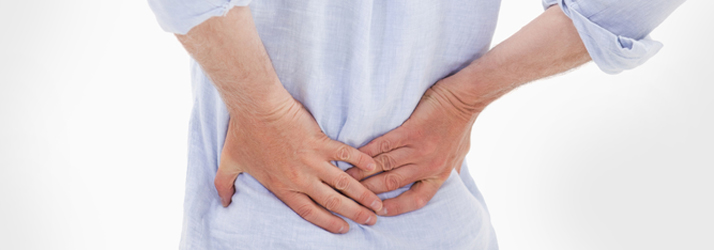Common Diagnosis For Low Back Pain Details & How To Resolve Them In Austin TX

Low back pain, also known as lumbago, is a common ailment that affects the lower part of the spine. It can range in severity from a dull ache to sharp, shooting pain. Causes of low back pain include muscle strain, herniated discs, spinal stenosis, and arthritis. Common symptoms include stiffness, limited mobility, and difficulty performing everyday tasks. Treatment options typically include rest, pain medication, physical therapy, and in some cases, surgery. It is essential to seek medical attention if symptoms persist or worsen. Contact our Austin TX chiropractor today to learn more.
Low Back Pain Is Prevalent In Austin TX
Low back pain is an extremely prevalent condition that affects a large portion of the population. It is a major cause of disability globally, with about 80% of individuals experiencing it at some point in their lives. Additionally, it is the second most common cause for individuals seeking medical assistance. Recurrent episodes of low back pain occur in around half of all adults each year. This condition can have a profound impact on a person's daily functioning, and frequently leads to feelings of depression, especially when compared to other spinal issues. Furthermore, low back pain can manifest as localized discomfort or progress to include radiating pain down the leg, commonly referred to as Sciatica.
Subluxations, or misalignments of the spine, are a common cause of low back pain. When left unaddressed, these subluxations can lead to a condition known as subluxation degeneration, which is also referred to as arthritis. This condition encompasses various degenerative disorders such as degenerative disc disease (DDD), degenerative joint disease (DJD), and the formation of bone spurs. These conditions are part of the degenerative process that occurs when subluxations are not corrected. If left untreated, this degenerative process can also result in disc bulges or herniations, spinal curvature (scoliosis), and narrowing of the spinal canal (spinal stenosis). These abnormal spinal conditions can eventually progress to cause sciatic nerve pain.
Trauma, injury, or impacts are often the culprits behind numerous cases of low back issues. Occasionally, it can result from strained muscles or sprained ligaments due to accidents or lifting injuries. However, individuals may frequently experience recurring pain in the same region, even after engaging in minor activities. Such occurrences could potentially indicate an underlying structural problem that requires careful examination and thorough investigation.
A sedentary lifestyle is a common cause of low back problems. Being inactive and sitting for long periods can lead to more health issues as compared to those who are physically active. The Centers for Disease Control and Prevention even goes as far as saying that sitting is as detrimental to health as smoking. This emphasizes the negative impact of prolonged sitting on our well-being. It is important to note that low back pain often requires intervention and does not typically go away on its own. Though the pain may temporarily subside, it often returns and becomes chronic. Many individuals find relief through exercise, stretching, massage, or yoga. Some may need to temporarily avoid specific activities to allow their back to heal. However, it is typically not beneficial to remain on bed rest or immobilize the back, except in cases of severe conditions like fractures or short-term recovery after surgery.
Studies have demonstrated that when the spine is misaligned (subluxated), it gradually degenerates over time. Interestingly, the frequency and intensity of pain experienced by an individual with a misaligned lower back do not accurately indicate the extent of degeneration (arthritis) taking place. Consequently, the condition may worsen without exhibiting noticeable symptoms. Early identification and appropriate intervention are crucial in addressing the root cause of the issue. The goal of chiropractic is to rectify the problem, if feasible, and if permanent degeneration has occurred, to halt or slow down the progression.
Consider Chiropractic Care As An Alternative To Surgery
Between 2001 and 2011, there was a drastic 70% increase in the number of spinal fusion surgeries conducted in hospitals across the United States. This surge in popularity has made spinal fusions more common than even hip replacements. However, it is important to note that this surgical procedure should only be considered as a last resort for extreme cases where all other treatments have failed.
Contrary to the rising trend of spinal fusion surgeries, our office firmly believes in the efficacy of safe and conservative chiropractic care. At Chiropractic Arts of Austin, we have observed that more than 90% of our patients successfully recover without the need for drugs or surgery. Our treatment protocol includes a combination of the Cox Flexion/Distraction Technique*, specific segmental adjustments, Cold Laser therapy, lumbar belts (when appropriate), and targeted anti-inflammatory supplements.
To further enhance the healing process, our in-office adjustments are supplemented with specific stretches and exercises to be performed at home. We prioritize open and transparent communication, and we will provide you with an honest assessment of how our care can potentially benefit you. Additionally, if we believe that you could benefit from an alternative or additional form of treatment, we will not hesitate to inform you or suggest consulting another healthcare professional.
Please note that the Cox Flexion/Distraction Technique should not be confused with "Spinal Decompression". In our office, only the doctor performs the Cox Flexion/Distraction Technique. The movements used are gentle, slow, and specifically focused on the problematic disc. Throughout the procedure, the doctor's hands remain in contact with you, enabling them to feel and adjust the pressure and force according to your body's needs. The combination of the gentle table movements and the doctor's hand placement generates a negative vacuum effect, aiding in the repositioning of the protruding disc.
Call our office for an appointment if you are suffering from Low Back Pain and would like a clear diagnosis for the best treatment to eliminate your pain.
Monday
9:00am - 1:00pm
3:00pm - 6:00pm
Tuesday
9:00am - 1:00pm
Wednesday
9:00am - 1:00pm
3:00pm - 6:00pm
Thursday
9:00am - 1:00pm
Friday
Closed
Saturday & Sunday
Closed
Chiropractic Arts Center of Austin, P.C.
4131 Spicewood Springs Rd L-3
Austin, TX 78759



